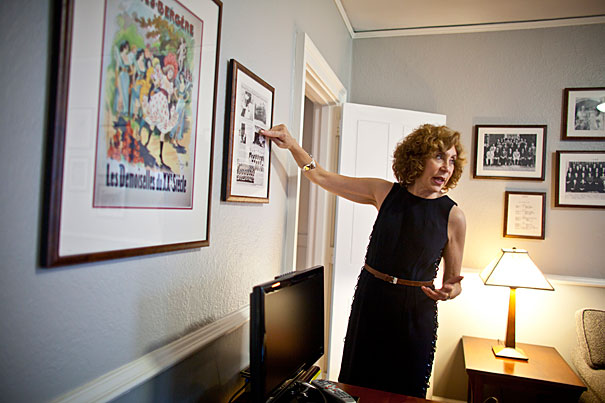
Interior designer Dale E. Holman was charged with capturing “the flavor of the way it was when he lived here,” at the request of Institute of Politics Executive Director Catherine McLaughlin.
Justin Ide/Harvard Staff Photographer
A room fit for a president
JFK’s Winthrop House suite gets a historic facelift
Visitors to Harvard could find worse places to shack up than Winthrop House Suite F-14. The two modest rooms, on the first floor of Gore Hall overlooking a courtyard and the Charles River, can be a hidden oasis for newcomers to the Square.
The suite also happens to be the former home of John F. Kennedy, who lived there as a Harvard College senior. Thanks to a recent redesign of the space in honor of the 50th anniversary of his inauguration as president, guests can now enjoy the suite as he might have.
The project was intended to capture “the flavor of the way it was when he lived here,” said Dale Holman, owner of Dale E. Holman Interior Designs Inc. and a regular attendee at the John F. Kennedy Jr. Forum, who oversaw the redesign at the request of Institute of Politics (IOP) Executive Director Catherine McLaughlin.
As it turns out, the appeal of sitting down before an Underwood portable typewriter — the style JFK used — and imagining him writing the thesis that would become his first book, “Why England Slept,” just might trump the view.
Holman and Julie Schroeder, a longtime IOP staff assistant, bought the rights to a Boston Globe photograph of Kennedy ’40 in his dorm room and analyzed its details to recreate the furnishings and layout of the two-person suite. (Kennedy shared it with his close friend, football captain Torbert “Torby” Macdonald ’40.)
“My goal was to produce an environment that I felt JFK could have actually existed in, and still make it comfortable” for visitors, Holman said. “It’s a fine line, because a dorm room is a dorm room. But the people who stay here desire something that’s a little more luxurious.”
They also want to be a part of history — a nostalgic longing Holman and the IOP hoped to harness in the suite’s redesign.
They turned to the Internet to track down historical period pieces, like a rare Folies Bergère print that JFK had owned, a rotary telephone, and the Underwood, which Schroeder found on eBay for $50.
Photos of a young JFK line the walls, along with a framed portrait of his mother, Rose Fitzgerald Kennedy, that he kept on his dresser. Some original touches, however, were updated: Instead of a small piano, the suite’s common area now boasts a flat-screen TV.
Furniture and materials for the project were provided at minimal cost by Stickley, Audi Furniture & Co., A. Rudin Furniture, Polo Ralph Lauren (linens), Pollack Associates (fabric), Oriental Rug Importers Inc., Glenn Elwell and Mark Lansing (interior painting), and Evan Mihaich Flooring.
The institute has managed the suite since May 29, 1970, when the space was dedicated for the use of IOP guests in a ceremony on the late president’s birthday. At the time, it was hardly the romantic portal to history that one might expect.
“It was kind of dowdy,” said Schroeder, who spearheaded the project. “There wasn’t anything that gave you a sense of JFK being here.”
Still, a parade of impressive patrons was drawn to the president’s quarters over the years. Old guestbooks bear the signatures of everyone from Frank Capra to Sen. Eugene McCarthy to Texas Gov. John Connally, who was riding with Kennedy at the time of his assassination.
Actor Alec Baldwin recently spent a night there, though, as Schroeder notes, he forgot to sign the guest book. Even famous skeptic Christopher Hitchens, who documented his stay for the British “Spectator” in 1985, was eventually won over by the then-bare JFK Suite.
“I wanted to be invited back,” Hitchens admitted. If only he could see it now.
Suite F-14 Justin Ide/Staff Photographer
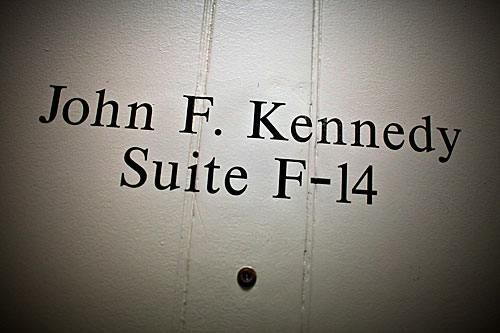
Suite F-14
John F. Kennedy was part of Harvard Class of 1940 and lived in Winthrop House, suite F-14. The space is now managed by the Institute of Politics and through them interior designer Dale Holeman was brought in to bring the room back to its period look.
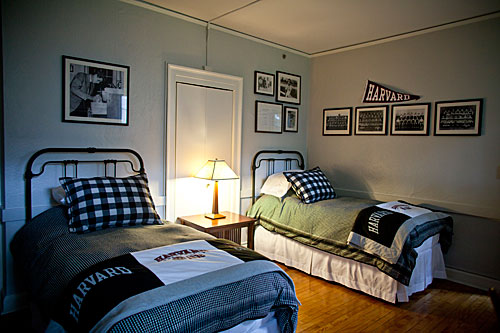
Gingham pillows
Gingham pillows, Harvard throw blankets, and a felted Harvard flag adorn JFK’s former room.
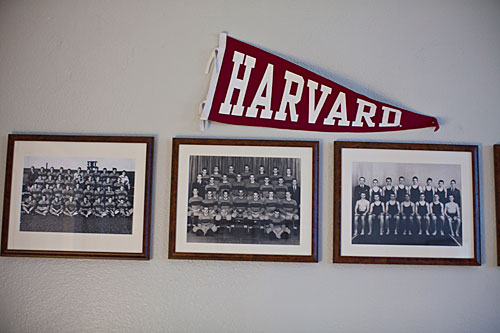
Photographs and memories
Memorabilia from JFK’s time at Harvard.
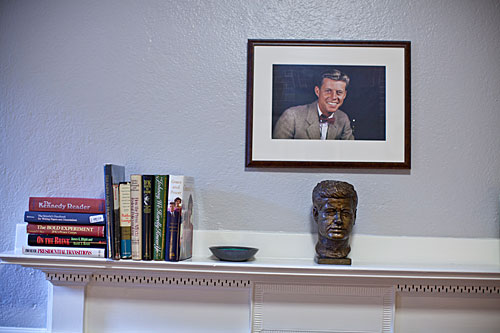
Presidential suite
All things JFK: A bust, a portrait, some books …
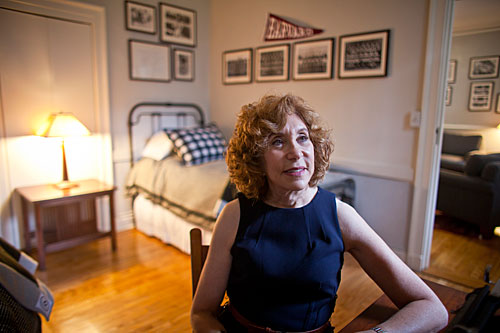
‘Flavor’
Interior designer Dale E. Holman was charged with capturing “the flavor of the way it was when he lived here,” at the request of Institute of Politics Executive Director Catherine McLaughlin.
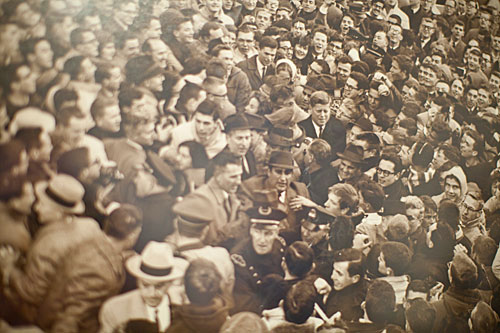
Blazing trails
JFK, in in the midst of a crowd, while on the campaign trail.
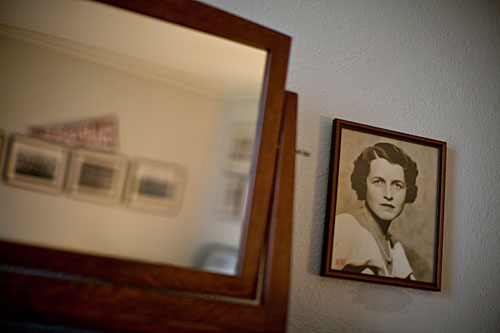
Rose
A portrait of JFK’s mother, Rose.
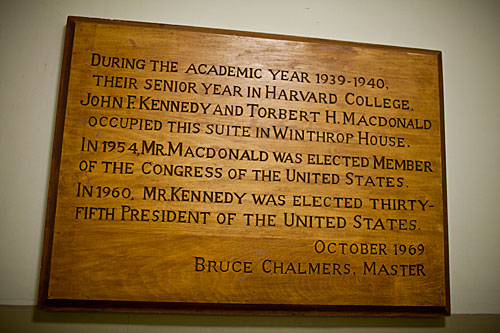
Famous occupants
A historical room, indeed.




